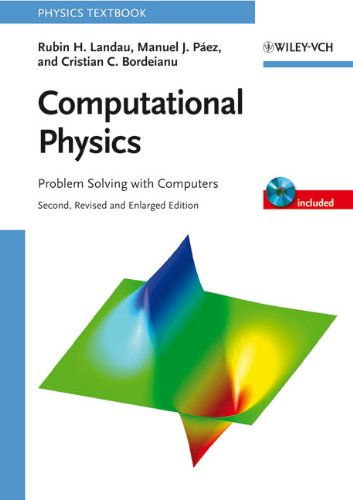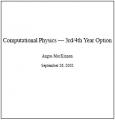
Computational Physics: Problem Solving with Computers
by Rubin H Landau, Manuel J Paez, Cristian Bordeianu
Publisher: Wiley-VCH 2012
ISBN/ASIN: 3527406263
Number of pages: 526
Description:
This upper-division text surveys many of the topics of modern computational physics from a computational science point of view. Its emphasis on learning by doing (assisted by many model programs), as with 2nd Edition, but with new materials as well as with Python.
Download or read it online for free here:
Download link
(39MB, PDF)
Similar books
 Computational Physics
Computational Physicsby Angus MacKinnon - Imperial College London
This course aims to give the student a thorough grounding in the main computational techniques used in modern physics. This is not a text in computing science, nor in programming. It focuses specifically on methods for solving physics problems.
(13728 views)
 Computational Thermodynamics
Computational Thermodynamicsby Johan Hoffman, Claes Johnson
Computational foundation of thermodynamics based on deterministic finite precision computation without resort to statistics. A new 2nd Law without the concept of entropy is proved to be a consequence of the 1st Law and finite precision computation.
(15065 views)
 Physical Mathematics
Physical Mathematicsby Michael P. Brenner - Harvard University
This is an introduction to mathematical methods for solving hard mathematics problems that arise in the sciences -- physical, biological and social. Our aim therefore is to teach how computer simulations and analytical calculations can be combined.
(10961 views)
 Computational Physics
Computational Physicsby Morten Hjorth-Jensen - University of Oslo
These notes should train you in an algorithmic approach to problems in the sciences, represented here by the unity of three disciplines, physics, mathematics and informatics. This trinity outlines the emerging field of computational physics.
(16065 views)